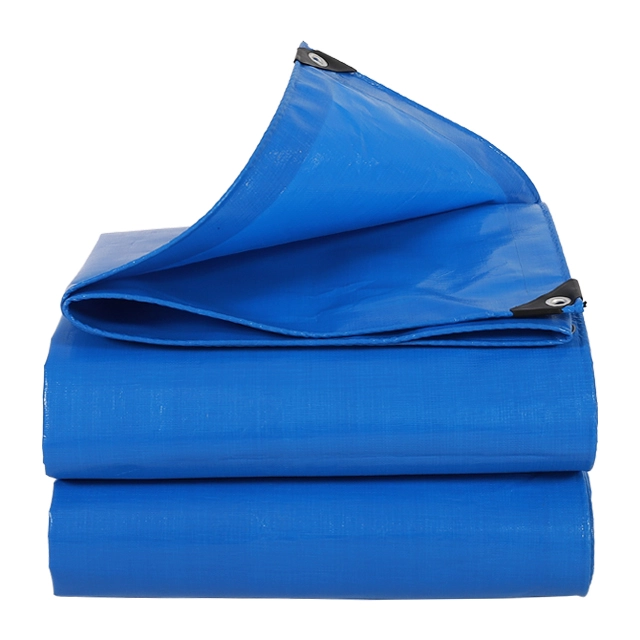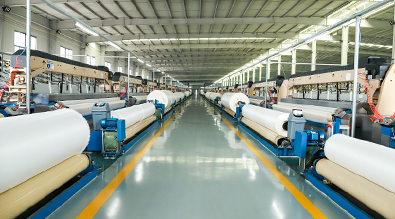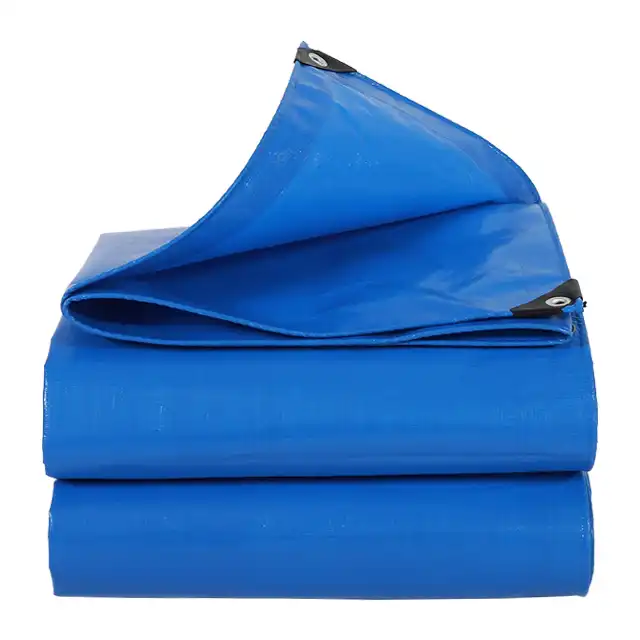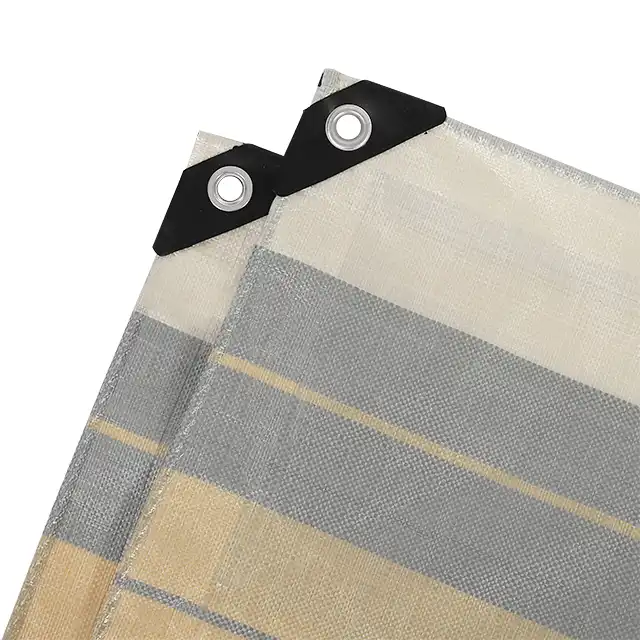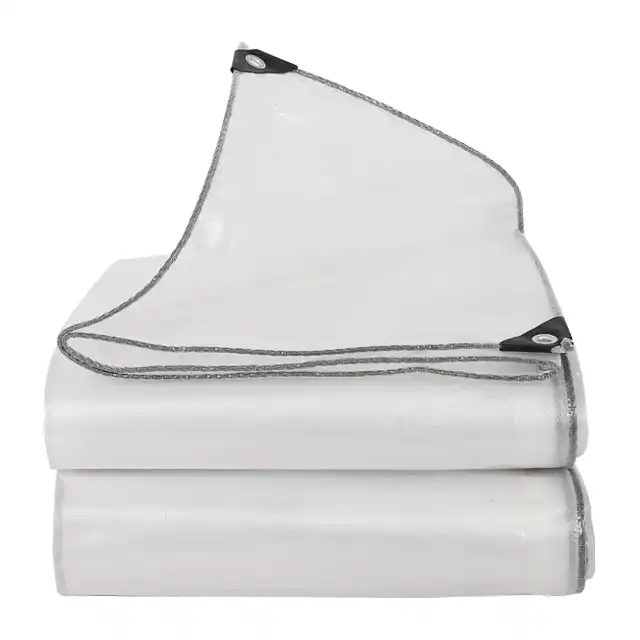Which Tarpaulin Color Works Best for Construction Sites?
Selecting the right tarpaulin color for construction sites is a critical decision that impacts safety, functionality, and project efficiency. Construction sites often use blue tarps, which are easily seen, fairly economical, and widely available, but the optimal choice depends on specific project requirements, environmental conditions, and safety protocols. Construction tarpaulin serves multiple purposes including weather protection, material coverage, debris containment, and visual identification of different work zones. Understanding the characteristics and applications of various tarpaulin colors enables construction managers to make informed decisions that enhance both operational efficiency and workplace safety standards across diverse construction environments.
Essential Color Considerations for Construction Site Safety and Functionality

High-Visibility Colors for Enhanced Safety Protocols
Bright colors like red, yellow, or orange are best for safety and visibility in high-risk areas, making them indispensable for construction environments where worker safety is paramount. Construction tarpaulin in high-visibility colors serves as an immediate visual warning system, alerting workers and visitors to potential hazards or restricted areas. These vibrant colors are particularly effective in busy construction zones where multiple crews operate simultaneously, reducing the risk of accidents and improving overall site coordination. Orange construction tarpaulins have gained widespread acceptance in the industry due to their exceptional visibility under various lighting conditions. The bright orange hue cuts through dust, fog, and low-light situations commonly encountered on construction sites. Professional construction teams utilize orange tarps to mark dangerous zones, cover hazardous materials, and create temporary barriers around excavation sites. The psychological impact of orange also triggers heightened awareness among workers, naturally encouraging more cautious behavior in designated areas. Modern construction tarpaulin manufacturers have enhanced orange formulations with reflective properties, further improving visibility during early morning and evening operations when natural light is limited. Red construction tarpaulins serve a specialized function in construction site safety protocols. Red is mostly used to show visual importance for materials or dangerous places in construction sites. It reduces the risks of getting into an accident as it warns workers to use extra caution in these areas. The universal association of red with danger makes it an ideal choice for covering equipment that poses significant hazards, marking emergency assembly points, and identifying areas where specialized safety procedures must be followed. Construction tarpaulin in red also facilitates quick identification of critical materials and equipment, enabling faster emergency response when needed.
Traditional Blue Tarpaulins for Versatile Construction Applications
Blue remains the most popular choice for construction tarpaulin applications worldwide. Among the reasons why the blue tarp has become so popular is its excellent combination of durability and affordability. They are waterproof, produce shade, and offer reliable performance across various construction scenarios. The widespread availability of blue tarps has made them the industry standard for general-purpose applications, from temporary roofing to equipment protection. Blue and green tarps are all-purpose tarps that are perfect for construction, landscaping and household tasks, providing construction managers with versatile solutions for multiple project phases. Blue construction tarpaulin excels in applications where moderate visibility is required without the urgency associated with bright warning colors. These tarps effectively blend professionalism with functionality, making them suitable for projects where aesthetic considerations matter, such as residential construction sites in developed neighborhoods. The thermal properties of blue construction tarpaulin make them particularly effective for moderate climate applications. Blue tarps provide adequate heat reflection while maintaining reasonable heat absorption, creating comfortable working conditions underneath. Construction crews appreciate the balanced light filtration that blue tarps provide, offering sufficient illumination for detailed work while protecting against harmful UV radiation. The color stability of quality blue construction tarpaulin ensures long-term performance without significant fading, maintaining professional appearance throughout extended project timelines.
Specialized Color Applications for Specific Construction Needs
Silver and white construction tarpaulins represent premium solutions for projects requiring superior thermal management. Light-colored tarps, such as white or silver, reflect sunlight and help reduce heat, making them ideal for hot climates. These colors are particularly valuable in construction projects located in regions with intense solar radiation, where temperature control directly impacts worker productivity and material preservation. Silver construction tarpaulin offers the highest level of solar reflection among available options, making it the preferred choice for covering temperature-sensitive materials and creating comfortable temporary work environments. The reflective properties of silver tarps can reduce surface temperatures by up to 20 degrees Fahrenheit compared to darker alternatives, significantly improving working conditions during summer construction projects. Professional construction teams utilize silver tarps for concrete curing applications where temperature control is critical for achieving optimal strength development. Green construction tarpaulins serve specialized applications where environmental harmony is required. Construction projects in parks, residential areas, or environmentally sensitive locations benefit from green tarps that blend naturally with surrounding vegetation. For blending in with natural environments: Green is your go-to option for maintaining project discretion while providing necessary protection. Green construction tarpaulin helps minimize visual impact on communities while delivering the same protective qualities as traditional colors.
Technical Specifications and Performance Characteristics Across Color Options
Material Construction and Color-Specific Durability Factors
Modern construction tarpaulin manufacturing incorporates advanced polyethylene technologies that ensure consistent performance across all color options. Quality construction tarps utilize high-density polyethylene (HDPE) woven fabrics with low-density polyethylene (LDPE) coating systems that provide waterproof protection while maintaining flexibility under varying temperature conditions. The color pigmentation process involves integrating UV-resistant compounds directly into the polymer matrix, ensuring long-term color stability and material integrity. Construction tarpaulin durability varies significantly based on color-specific UV absorption characteristics. Lighter colors generally exhibit superior longevity due to reduced thermal stress, while darker colors may experience accelerated aging in high-UV environments. Professional manufacturers address these challenges through enhanced UV stabilizer formulations tailored to specific color requirements. Advanced construction tarpaulin products incorporate specialized additives that maintain material properties across the entire color spectrum, ensuring reliable performance regardless of color selection. The weaving density and coating thickness specifications remain consistent across color options in quality construction tarpaulin products. Standard mesh counts ranging from 10x10 to 14x14 provide optimal balance between strength and weight, while coating weights from 100gsm to 280gsm accommodate diverse application requirements. Professional construction teams rely on these standardized specifications to ensure predictable performance across different colored tarps within the same project.
Weather Resistance and Environmental Performance
Construction tarpaulin performance under extreme weather conditions varies subtly based on color selection, with implications for long-term project planning. Light-colored tarps demonstrate superior performance in high-temperature environments by reducing thermal cycling stress that can lead to premature material degradation. Dark-colored construction tarpaulins excel in cold weather applications where solar heat absorption provides beneficial warming effects for covered materials and work areas. Wind resistance characteristics remain consistent across color options when comparing construction tarpaulins of identical specifications. However, color visibility plays a crucial role in monitoring tarp condition during adverse weather events. Bright-colored tarps enable easier inspection for damage or displacement, facilitating proactive maintenance that extends service life and maintains protective integrity throughout challenging weather periods. The waterproof performance of construction tarpaulin depends primarily on coating quality rather than color selection. Professional-grade products maintain consistent water resistance across all color options through advanced lamination processes that create seamless protective barriers. Quality manufacturers ensure that color pigments do not compromise the molecular structure of waterproof coatings, delivering reliable protection regardless of aesthetic preferences.
Size Availability and Customization Options
Construction tarpaulin manufacturers offer extensive size ranges across all color options to accommodate diverse project requirements. Standard sheet sizes range from small residential applications to massive commercial installations, with custom dimensions available for specialized construction needs. The ability to produce seamless construction tarpaulins up to 5 meters in width eliminates the need for field joining, reducing potential failure points and improving overall system reliability. Roll format construction tarpaulins provide flexibility for large-scale applications where precise coverage is required. Professional installation teams appreciate the ability to cut tarps to exact dimensions on-site, minimizing waste while ensuring optimal coverage. The consistency of material properties across extended lengths ensures uniform performance throughout large installations, regardless of selected color options. Custom printing capabilities enable construction companies to incorporate branding, safety messages, and project identification directly onto construction tarpaulins. This customization enhances professional appearance while serving practical communication purposes on busy construction sites. Quality manufacturers maintain color consistency between base tarp material and printed elements, ensuring cohesive visual integration that meets professional standards.
Cost-Effectiveness and Long-Term Value Analysis
Initial Investment Considerations Across Color Options
Construction tarpaulin pricing remains relatively consistent across standard color options, with premium colors commanding modest increases over basic blue alternatives. The cost differential typically ranges from 5-15% for specialized colors, representing minimal impact on overall project budgets while delivering significant functional benefits. Professional construction managers increasingly recognize that color selection represents a minor investment compared to potential savings from improved safety and operational efficiency. Volume purchasing opportunities provide additional cost advantages for construction companies with multiple ongoing projects. Many manufacturers offer quantity discounts that effectively eliminate per-unit premiums for premium colors, making high-visibility or specialized-function tarps cost-competitive with standard options. Strategic procurement planning enables construction firms to maintain inventory across multiple color options without significant financial impact. The relationship between color selection and replacement frequency significantly impacts long-term cost effectiveness. Light-colored construction tarpaulins often demonstrate extended service life due to reduced thermal stress, offsetting higher initial costs through delayed replacement needs. Professional contractors factor these lifecycle considerations into procurement decisions, recognizing that premium color options may deliver superior value over extended project timelines.
Operational Efficiency and Safety Return on Investment
High-visibility construction tarpaulin colors deliver measurable safety benefits that translate into concrete financial returns through reduced accident rates and improved regulatory compliance. Construction sites utilizing bright-colored tarps for hazard identification report fewer safety incidents and improved inspector feedback during regulatory reviews. The cost of premium-colored construction tarpaulins represents a fraction of potential liability exposure, making safety-focused color selection a prudent risk management strategy. Improved workflow efficiency represents another significant value proposition for appropriate construction tarpaulin color selection. Color-coded systems enable faster material identification, reduce time spent locating specific equipment or supplies, and facilitate better project organization. Construction crews operating with well-designed color systems report productivity improvements that offset tarp costs within weeks of implementation. The professional appearance enhanced by appropriate construction tarpaulin color selection provides intangible benefits that impact client relationships and business development opportunities. Projects utilizing coordinated, professional-appearing tarps create positive impressions that support customer satisfaction and referral generation. While difficult to quantify precisely, these relationship benefits contribute significantly to long-term business success and growth opportunities.
Maintenance Requirements and Replacement Planning
Construction tarpaulin maintenance requirements vary slightly based on color selection, with implications for long-term operational planning. Light-colored tarps may require more frequent cleaning to maintain professional appearance, while dark-colored options better conceal stains and weathering. Professional construction teams develop maintenance protocols that balance appearance requirements with practical cleaning constraints based on selected color options. Replacement planning considerations incorporate color-specific aging characteristics and project timeline requirements. Construction tarpaulins subjected to intense UV exposure may require more frequent replacement regardless of color, while projects in moderate climates can achieve extended service from premium color options. Quality manufacturers provide guidance on expected service life based on specific application conditions and color selections. Inventory management strategies benefit from standardizing construction tarpaulin colors across similar applications while maintaining specialized colors for specific safety or functional requirements. This approach optimizes procurement efficiency while ensuring appropriate materials are available for all project phases. Professional construction companies develop color standardization guidelines that balance operational efficiency with specific project needs and safety requirements.
Conclusion
Selecting the optimal construction tarpaulin color requires balancing safety requirements, functional needs, and cost considerations specific to each project environment. Blue tarps are easily seen, fairly economical, and widely available, making them suitable for general applications, while high-visibility colors provide enhanced safety benefits. Light-colored options offer superior thermal management, and specialized colors serve specific operational requirements. Professional construction teams achieve the best results by matching color selection to specific application needs rather than defaulting to traditional choices.
For construction professionals seeking reliable, high-quality construction tarpaulins, Linyi Shengde Plastic Co., Ltd. stands as a trusted China Construction Tarpaulin factory with over two decades of manufacturing excellence. As a leading China Construction Tarpaulin supplier and China Construction Tarpaulin manufacturer, we offer comprehensive solutions including China Construction Tarpaulin wholesale options and competitive Construction Tarpaulin for sale pricing. Our Construction Tarpaulin price reflects our commitment to delivering High Quality Construction Tarpaulin that meets the most demanding construction applications. With partnerships including UNHCR, IOM, ICRC, and UNICEF, our ISO 9001:2015 certified facility produces over 100 tons daily of premium construction tarpaulins available in any color specification. Our advanced R&D capabilities and customization services ensure that every construction project receives optimal tarp solutions tailored to specific requirements. Contact us at info@shengdetarp.com to discuss your construction tarpaulin needs and discover why leading construction companies worldwide trust Shengde for their protective covering requirements.
References
1. "Tarp Colors: Color-by-Color Differences Explained" - Professional Construction Materials Institute, Construction Safety Quarterly, 2024
2. "Construction Site Safety Standards and Visual Identification Systems" - American Society of Safety Professionals, Industrial Safety Review, 2024
3. "Polyethylene Tarpaulin Performance Analysis in Construction Applications" - International Association of Construction Materials, Technical Materials Journal, 2024
4. "Color Psychology and Safety Applications in Construction Environments" - Occupational Safety and Health Research Institute, Workplace Safety Studies, 2024
